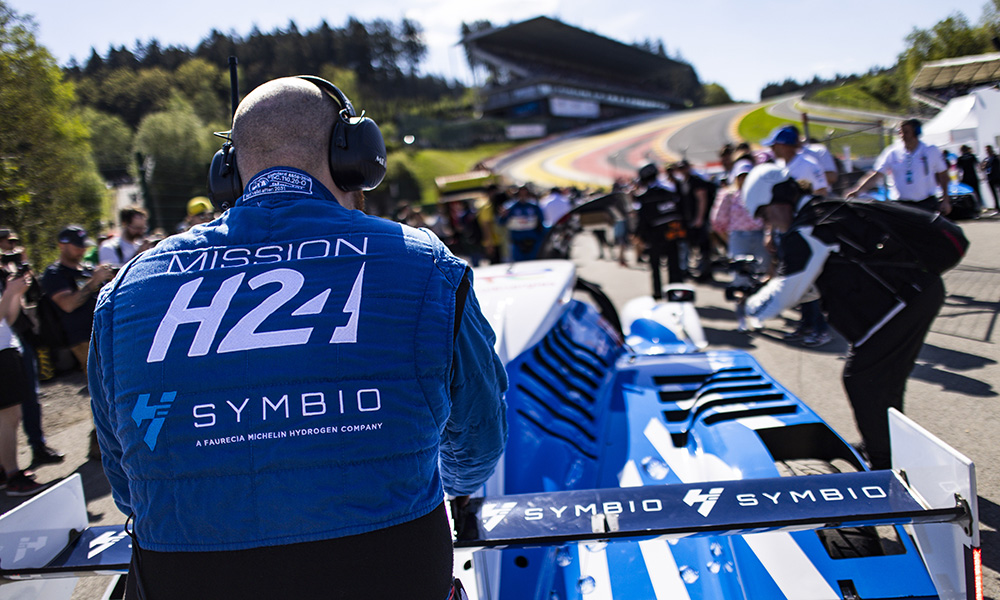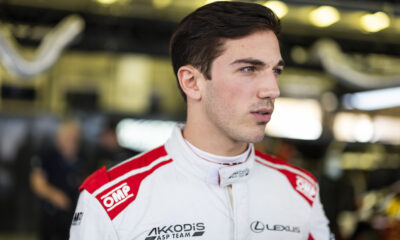
Photo: Julien Delfosse/DPPI
Chief Technical and Safety Officer Xavier Mestelan-Pinon admits the process of drawing up the technical regulations for the FIA World Endurance Championship’s future hydrogen category is still “in the very beginning.”
Following a further delay announced earlier this year, the WEC is due to begin welcoming hydrogen-powered cars to fight for overall wins starting in 2028, with Toyota, Alpine and BMW among the existing manufacturers to have expressed an interest in the class.
The governing body of world motorsport, together with the ACO with which it co-governs the WEC, made the decision earlier this year to expand the scope of the hydrogen regulations to include storage of the element in liquid form.
ACO President Pierre Fillon expressed hope earlier in the year that draft regulations for the new class would be available to teams by the end of the year.
But speaking to Sportscar365, Mestelan-Pinon admitted that progress on the rules has been limited as the FIA seeks to first establish a general framework for hydrogen power that would be used by all championships under its umbrella, not just the WEC.
“We are working on the general regulations regarding the usage of hydrogen, including all the safety guidelines,” said Mestelan-Pinon. “These regulations will be used in all our championships, although the first application will be the WEC.
“We are working already for the future [technical] regulations, but we are still in the very beginning. We have not finalized the general regulations based on hydrogen as a liquid for the storage system.
“We made the decision [to include liquid hydrogen] at the beginning of 2024, and a lot of things have to be done of course. We already proposed a draft to the World Motor Sport Council, and by the end of the year we will release the first regulations for liquid storage.”
ACO Technical Director Thierry Bouvet added: “How big must the tank be, what pressure [is the fuel stored at], these things need to be known before we dive into the regulations.”
Mestelan-Pinon emphasized that a 2028 debut for hydrogen remains “the target today”, echoing comments made by Fillon earlier this year indicating that hydrogen cars are likely to be eligible for a limited number of races, potentially two or three, in their first season.
The current generation of LMH and LMDh cars have had their homologation extended through 2029, which would create a two-year overlap with hydrogen assuming no further delays for the latter category.
On what future there could be for non-hydrogen cars post-2029, Mestelan-Pinon hinted at the possibility of new rules for traditional internal combustion engines being drawn up to keep grids in the top tier of sports car racing healthy.
“We don’t know how many hydrogen cars we will have in five years,” he said. “To know if we need other ICE [regulations] with biofuel, it’s too early to say.”
Bouvet added: “There are plenty of layers of study to be done, regarding performance and safety, but we can’t tell you now how it will be balanced now without having those studies. We need to assess what needs to be done and how it could be done.”
Although having not yet made a firm commitment to the WEC’s hydrogen class, Toyota has been vocal in its support for the technology, having pioneered hydrogen combustion technology in Super Taikyu with its GR Corolla H2 Concept program starting in 2021.
It initially ran the car on gaseous hydrogen before switching to liquid hydrogen in 2023, a move that significantly improved the car’s cruising range.
The FIA followed Toyota’s lead by prioritizing storage of hydrogen in liquid form over gas in its efforts to form the WEC’s future regulations, although its announcement in February said it would allow gas-based solutions to be used on an interim basis.
No Decision on Fuel Cell, Combustion Hydrogen Balancing
Despite the FIA’s recent focus on liquid hydrogen, the 2028 regulations will also allow for the use of fuel cells, around which the ACO’s in-house H24 program has been based.
BMW has notably said it favors fuel cell technology over combustion-based hydrogen for environmental reasons, and already has fuel cell-powered cars in its road car range.
Discussing the differences between the two approaches, Mestelan-Pinon recognized the hurdles to using fuel cells in motorsport remain considerable, and didn’t rule out the possibility that both solutions could be equalised by the rule makers.
“It’s still open,” said Mestelan-Pinon. “Combustion seems to be better for efficiency.
“Fuel cell needs cleaner hydrogen, and all the EV parts, battery, motor, so it’s much more complex. You also need to cool the fuel cell, and for that you need a big radiator. But for road car applications with a small amount of power, it seems to be a good solution.
“The question is do we need to balance the technologies or just let the best one win.”
Bouvet said that the technology that wins out will be the one that garners most manufacturer support, saying: “It will be pushed by the OEMs.”
The space requirements for hydrogen fuel tanks have led to suggestions that the 2028 regulations could mark a move away from traditional two-seater sports cars in favor of closed single-seater designs with a central driving position.
Mestelan-Pinon didn’t give a firm answer when asked about the topic, but didn’t deny that safety requirements could push the rules in that direction.
“My opinion is if the safety is better with one seat, then one seat is better,” he said.
John Dagys contributed to this report
























